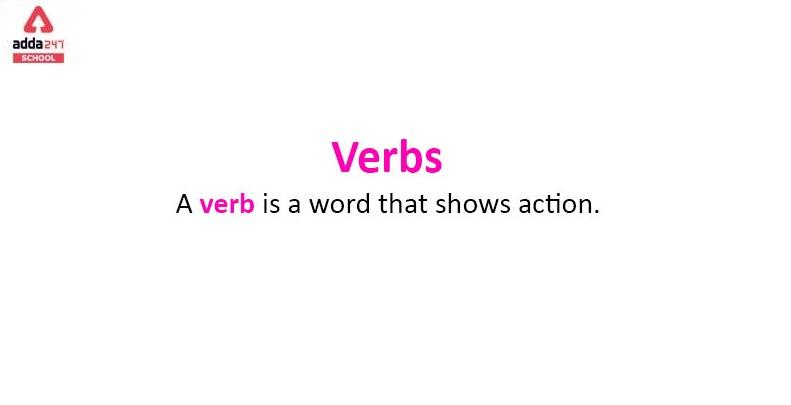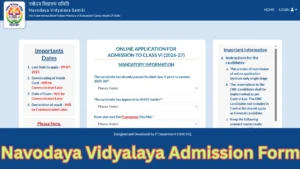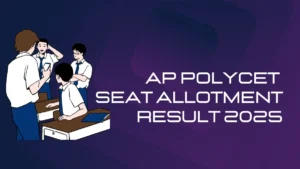Verb
We cannot conceive a sentence without a verb, just as we cannot envision life without water. In English grammar, the verb is a crucial part of every phrase. A verb is a word group that describes an activity that the subject has carried out. play, read, feel, and Know are examples of verbs.
Verb Meaning
In a simple way, it can say that Verb represents a course of action or the occurrence of an action. Here we going to discuss Verb definition, different types of verbs, their usage, and examples.
Verb Definition
The verb is the most important word in a sentence. The verb is a must for a sentence. Even alone it can make a sentence – A one-word sentence. Example – [ Go. , Fire! ]. A verb denotes doing i.e an action or state of being or having something. According to the Cambridge Dictionary, a ‘verb’ is defined as “a word or phrase that describes an action, condition, or experience”
We can use the verb in a sentence in two ways –
1) to express an action or an event:
For example-
1) The children play in the park. Here ‘play’ describes what the children are doing in the park.
2) He is looking at the picture. Here ‘looking’ is the verb.
2) to express a state (of being or having something)
For example –
1) We have a TV
2) The children are all happy.
Verb Definition in Hindi (Verb ki Definition)
Defination of verb in hindi is; क्रिया एक शब्द समूह है जो उस गतिविधि का वर्णन करता है जिसे विषय ने किया है। खेलना, पढ़ना, महसूस करना और जानना क्रियाओं के उदाहरण हैं। सरल तरीके से, यह कह सकता है कि क्रिया क्रिया के एक पाठ्यक्रम या किसी क्रिया के घटित होने का प्रतिनिधित्व करती है.
Verb Examples
Here’s a list of some commonly used action verbs and state verbs.
| To express | Verbs |
| 1. An action or an event | Drink, Write, Sit, Cut, Put, Match, play, Go, Enjoy Mark, Buy, Ring, Sing, Write, Choose, Read, See, etc |
| 2. State | Is, am, have, has, etc |
| 3. Feeling or State of Mind | Agree, adore,remember,hate,love,know,
imagine, think ,believe,desire,like,suppose etc |
| 4. Relationship | belong to, concern, lack, marry, fit, consist of , owe, own, contain, etc. |
Verb: Types
The verb is an essential part of speech in English grammar. As we know verb is used to define an action done by a subject or event or state. Primarily we can classify verbs into two categories-
| Verbs | Main verb |
| Auxiliary verb or helping verb |
Let’s go through these categories of verbs in detail along with examples
Main Verb
The main verb plays an important key role in a sentence to express an action performed by the subject or ‘doer’. We can’t form a sentence without the main verb. Some examples of main verbs are – Study, Read, Learn, Play, Eat, Go, etc. Let’s understand with examples,
I am studying in Class 10. In this sentence ‘ Studying ‘ is the main verb which describes the action of the subject.
Transitive Verbs and Intransitive Verbs
Main verbs can be classified in two ways Transitive Verbs and Intransitive Verbs. There is a minute difference between Transitive Verbs and Intransitive Verbs.
• Transitive verb- Transitive verbs are those verbs that need a direct object to complete their meaning or action passes over an object.
Example, 1. She cut the cake
She (subject)+ cut (Transitive verb)+ the cake ( Direct object)
2. Anil bought a new bicycle
Anil (subject)+ bought (Transitive verb)+ a new bicycle ( Direct object)
• Intransitive Verbs- Verbs classified as intransitive do not require an object to fully convey their meaning. Those verbs can provide meaning without an object.
Example,
1. The baby smiles.
2. He coughed.
In the above two sentences, there is no object although it has complete meaning. Smiles and coughed are Intransitive verbs.
Auxiliary verb
As the name suggests, auxiliary verbs or helping verbs are verbs that help the main verb in sentence formation. It is used to signify the mood or the tense of the main verb.
Whenever an auxiliary verb is used, there is always another verb present that serves as the main verb of the sentences. Is, are, have, has, and am are examples of auxiliary verbs. Sometimes Auxiliary verbs act as the main verb in the sentence.
Example- Raju is ill.
In above sentence states that Raju’s health is not good at the present time. Here auxiliary verb ‘ Is‘ suggests the present time
Raju was ill last week.
In this sentence, Raju is unwell last week. Here the auxiliary verb’ was ‘ suggests past tense
Modal verbs
The categories of auxiliary verbs known as modal verbs or auxiliaries are employed to convey the speaker’s attitude or mood. To indicate several forms of phrase modes, such as a request, recommendation, ability, counsel, permission, duty, necessity, prayer or wish, promise, etc.,
Here’s a list of some very commonly used modal auxiliaries provided.
| Can | Could | May |
| Might | Would | Must |
| Dare | Used to | Ought to |
| Shall | Will | Need |
| Am/was to | Have/Had to | Should |
Phrasal Verb
In English grammar, a phrasal verb is formed When two or more words are combined to form a single word with a distinct meaning.
For example-ran over, give up, break up, break down.
Phrasal verbs may be formed in three different ways –
A. Verb + Adverb particle
B. Verb + Preposition
C. Verb + Adverb +Preposition
Some common phrasal verbs are listed below –
| Phrasal verbs | English Meaning | Phrasal verbs | English Meaning |
| Act on / upon | Do something /React | Bear with | tolerate |
| Break down | Stop working | Bear away | Win |
| Break up | Finish or end | Bring down | cause to fail |
| Carry out | Execute | Carry on | Continue |
| Call up | Remember | Call in | Summon |
| Come by | get/obtain | Come down | Decrease |
| Get over | Recover from | Go on | Continue |
| Give away | Distribute | Look after | take care of |
| Give in | Surrender | look for | Search |
Forms of Verb
The verb form is a way to express context that describes the specific time of the action performed by the individual. As we know Verb is the fundamental unit of sentence formation. While the formation of sentences of different times, we need different forms of verbs. There are a total of five forms of verbs. These are -the root verb or basic form of the verb, third person singular present form of the verb, present participle or ‘ing’ form, and simple past and past participle.
Here we provide a list of present, past, and past participle forms of some important verbs, which helps students to memorize these verb forms very easily.
1) Present form of the verb ( V¹ )
2) past form of the verb (V²)
3) Past participle form of the verb (V³)
Let’s understand with some examples of verb forms.
| The basic form of the verb | The present form of the verb ( V¹ ) | The past form of the verb (V²) | Past participle form of the verb (V³) |
| Be | Be | was, were | been |
| See | See | Saw | Seen |
| Fly | Fly | Flew | Flown |
| Become | Become | Became | Become |
| Rise | Rise | Rose | Risen |
| Dig | Dig | Dug | Dug |
| Eat | Eat | Ate | Eaten |
| Go | Go | Went | Gone |
| Swim | Swim | Swam | Swum |
| Feel | Feel | Felt | Felt |
| Drive | Drive | Drove | Driven |
Linking Verbs
The linking verb acts in a sentence to describe the subject. As the name suggests It creates a link between the subject and the subject complement. In other words, the Linking verb plays the role of a bridge between the subject and the rest of the sentence.
For example,
1. Ram is a kind-hearted person.
In this sentence,’ Ram’ is the subject, ‘kind-hearted person is a subject complement or description of Ram, and ‘Is’ is the linking verb.
2. Mohon is a king.
Also here, ‘Mohon’ is the subject, ‘King ‘ is a subject complement or description of Ram, and ‘Is’ is the linking verb.
Regular Verbs and Irregular Verbs
As we learn before, to express the time of an action we use various forms of verbs in sentence formation. A regular verb can be expressed to indicate whether an activity occurred in the past or is now occurring.
The majority of the time, regular verbs’ are the past forms of root verbs that are created by adding an “ed” to the underlying verb. In the case of regular verbs, Past form and past participle form are always the same. But On the other hand, Irregular verbs do not adhere to these norms. They’re referred to as irregular verbs. These verbs each have a different form.
| Regular verb |
Irregular verb | ||||
| Base | Past Form | Past Participle | Base | Past Form | Past Participle |
| Look | looked | looked | Begin | Began | Begun |
| Play | played | played | Write | Wrote | Written |
| Help | helped | helped | Put | Put | put |
Related Post:









 Jawahar Navodaya Vidyalaya Admission For...
Jawahar Navodaya Vidyalaya Admission For...
 Karnataka DCET Seat Allotment Result 202...
Karnataka DCET Seat Allotment Result 202...
 AP POLYCET Seat Allotment Result 2025 OU...
AP POLYCET Seat Allotment Result 2025 OU...









